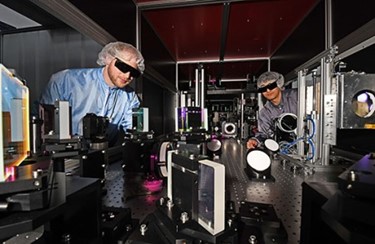Downsizing The Particle Accelerator

Munich physicists have succeeded in demonstrating plasma wakefield acceleration of subatomic particles in a miniaturized, laser-driven model. The new system provides a broader basis for the development of the next generation of particle accelerators.
The plasma wakefield acceleration (PWFA) technique is regarded as a highly promising route to the next generation of particle accelerators. In this approach, a pulse of high-energy electrons is injected into a preformed plasma, and creates a wake upon which other electrons can effectively surf. In this way, their energy can surpass that of the driver by a factor of 2-5. However, many technical and physical problems must be resolved before the technology becomes practical. This is no easy task, as only large-scale particle accelerators, such as those at DESY, CERN or SLAC, are currently capable of producing the driver pulses needed to generate the wakefield. A team led by Professor Stefan Karsch at the Laboratory of Attosecond Physics (LAP) – a joint venture between LMU Munich and the Max Planck Institute for Quantum Optics (MPQ) – has now shown that PWFA can be implemented in university labs. The new findings will facilitate further investigation of the PWFA concept as a basis for the development of compact, next-generation particle accelerators.(LAP/LMU)
Source: LMU Munich
